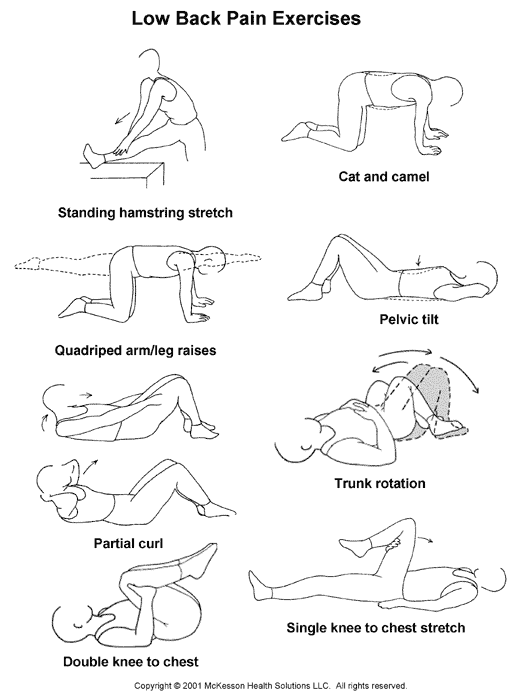
Over 40 million Americans suffer from various forms of chronic low back pain. We must work really hard.
Lower back pain is a tricky subject for an emergency physician. The lower back is a source of many life threatening emergencies, which I’ll discuss in a separate post, but for now, as always let’s give you some information to help prevent and address your routine back problems. Let’s start by understanding what the back’s trying to accomplish and how you help or hinder that process by your actions.
Remember the back is the major weight-bearing apparatus of the body and it connects the upper and lower body. It twists, turns, pulls and bends. It contains many vital nerves and muscles.
Let’s point at four situations that produce or exacerbate your back pain:
1. Bad form (born with or otherwise acquired):
- Spinal problems you were born with can predispose you to and outright cause all manner of back difficulties. Any machine works better if well-built.
- Obesity puts a significant strain on your back in various ways. Given that most people don’t build up their back muscles, sprains and chronic pain are quite easy when you’re front-loaded. Pregnancy produces a similar strain on your back.
2. Strains
Have you ever heard that it’s easier to lift with your legs than your back? Well, I’d never think so based on the habits of many patients, but it’s true. The lower extremities are much stronger than your back. One of the problems with back strains is once it gets weak, it gets worse. Muscle spasms, pain, more strains and protruding discs all become more likely.
3. Fractures
A broken back is no fun. A weakened back bone (vertebrae) may collapse on its own if diseased (e.g. cancer, age, arthritis, infection), it may become fractured or may be injured with significant trauma. Those with osteoporosis have this happen more commonly. These broken bones may compress spinal nerves. You may even get shorter.
4. Arthritis and Normal Deterioration (aging)
There are other forms of arthritis beside degenerative joint disease (osteoarthritis, which we all get as we age), but the resulting pain, warmth, redness, swelling and limitation in motion all forms lead to reduced function and pain that can continue for the remainder of one’s life.
Here are a few clues to help you hone in on whether your back pain requires emergency attention:
- Direct blow to your back
- Fever and new onset back pain
- Loss of control of your bowel movements or bladder function
- New onset back pain after age 65
- Numbness and tingling in both of your legs
- Nighttime back pain
- Sudden sexual dysfunction
- Weakness and/or loss of motion or sensation in your legs
- Weight loss and new onset back pain
- Work related back injuries
What can you do to prevent or reduce the pain at home?
- Learn and practice good posture. Sit when you can. Keep your back straight and shoulders back. When you stand, find something upon which to prop one of your feet, like a stool (think Captain Morgan).
- Learn the correct way to lift (bend at the knees, not at the back – every time). If you have pain, avoid bending, stretching and reaching if avoidable.
- Wear low-heeled shoes whenever you can, ladies!
- Learn how to stretch your back.
- Maintain a healthy weight, and exercise to strengthen your abdomen and back (your core)
- Sleep on your side. Try a pillow between your knees.
- Walk. Did you know walking is the best (and easiest) exercise for your back?
I’ll be back later (no pun intended) with your questions and more.


